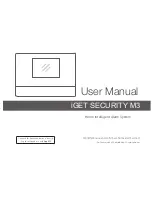
2
E
Settings on thePrema P360-101
Brightness setpoint value (lux)
Lighting time delay
Presence time delay
Presence switch-on delay
DIP-Switch:
DIP1
Fully automatic/semi-automatic
DIP2
Staircase light function:
room/corridor
DIP3 eco/eco plus
DIP4
Short-term presence On/Off
DIP5
Light test: normal operation/test
DIP6
Presence test: normal operation/
Walking
test
Mechanical safety lock
Light channel A
Switching response is controlled by presence and bright-
ness. The switch contact closes during darkness and when
someone is present. It opens with a delay when there is
brightness or when no one is present.
Time delay
The minimum time delay (10 s - 60 min) is adjustable.
It adjusts automatically to the user's behaviour and can
increase independently to max. 30 minutes or reduce back to
the set minimum time. With settings ≤ 2 min or ≥ 30 min, the
time delay remains unchanged at the set value. If someone
goes into an unoccupied room only briefly and leaves it within
30 seconds, then the light will be switched off prematurely
after 2 minutes (short-term presence).
Button control
The lighting can be manually switched at any time via a push
button or switch. If the light is switched on manually, it will
remain on for at least 30 minutes provided that people are
present. It then switches off when the brightness is adequate.
The light is forced off after the preset time delay if the room
was (previously) vacated. If artificial lighting is switched off
manually, the lighting remains switched off as long as the
room is occupied. The lighting switches again automatically
after the time delay has expired.
Fully or semi-automatic device
Lighting control via the presence detector operates fully
automatically for increased comfort or semi-automatically for
greater energy savings. The lighting switches on and off auto-
matically in "fully automatic" mode. In "semi-automatic", the
lighting must always be switched on manually. The lighting is
switched off automatically.
Staircase light function
The staircase light function can be set to "room" or "corridor"
using the DIP switch or the SendoPro management remote
control. Lighting can be switched on and off manually at any
time in the 'room' position. The detector operates as a stair-
case light control in the 'corridor' setting. Manual switch off is
no longer possible.
Exceptionally easy configuration of the energy-saving
behaviour
By selecting “eco” for optimal switching behaviour or “eco
plus” for maximum energy saving, users can adjust the pre-
sence detector to their requirements very easily.
Pulse function
Time delay can be set to pulse for controlling existing stair-
case light timer switch. To do so, the light output produces a
pulse of 0.5 seconds duration every 10 seconds if people are
present or it is dark.
Relay operating mode
The light relay can be deactivated. Further information can be
found on page 8, relay operating mode.
Presence channel H
Presence channel H is used for HVAC control or room monito-
ring. The switching response of the floating contact is influ-
enced only by presence and not by brightness. If the contact
is closed, the time delay will be restarted at every movement.
Sensors or switches do not influence the contact.
Switch-on delay
The switch-on delay prevents instantaneous switching on.
The contact closes only on expiry of the switch-on delay,
provided that people are permanently present.
Time delay
The time delay enables delayed switching off of HVAC devices
and systems after the room is vacated.
Room monitoring
If the switch-on delay is set to monitoring, this reduces the
sensitivity of the presence switch output. The contact closes
on distinct movement and indicates the presence of people
with a high degree of certainty. The time delay remains active.
The switch-on delay is inactive.
Relay operating mode
The presence relay can be used with different operating
modes. Presents channel H and light channel A can be
selected, while the light relay can be deactivated if desired.
This makes switching more quiet. Further information can be
found on page 8, relay operating mode.






























